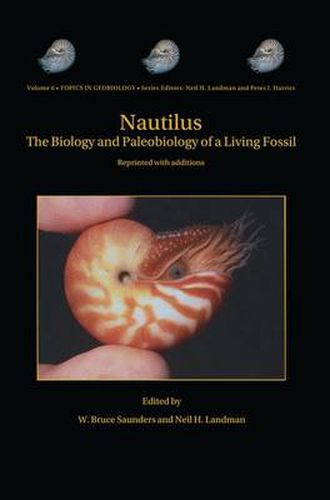Readings Newsletter
Become a Readings Member to make your shopping experience even easier.
Sign in or sign up for free!
You’re not far away from qualifying for FREE standard shipping within Australia
You’ve qualified for FREE standard shipping within Australia
The cart is loading…






This title is printed to order. This book may have been self-published. If so, we cannot guarantee the quality of the content. In the main most books will have gone through the editing process however some may not. We therefore suggest that you be aware of this before ordering this book. If in doubt check either the author or publisher’s details as we are unable to accept any returns unless they are faulty. Please contact us if you have any questions.
When Nautilus: Biology and Paleobiology of a Living Fossil was published in 1987, it marked a milestone in cross-disciplinary collaboration. More than half of the contributing authors (36/65) were paleontologists, many of whom were collaborating with neontological counterparts. Their interest in studying this reclusive, poorly known animal was being driven by a search for clues to the mode of life and natural history of the once dominant shelled cephalopods, through study of the sole surviving genus. At the same time, Nautilus offered an opportunity for neontologists to look at a fundamentally different, phylogenetically basal member of the extant Cephalopoda. It was a w- win situation, combining paleontological deep-time perspectives, old fashioned expeditionary zeal, traditional biological approaches and new techniques. The results were cross-fertilized investigations in such disparate fields as ecology, functional morphology, taphonomy, genetics, phylogeny, locomotive dynamics, etc. As one reviewer of the xxxvi Introduction xxxvii book noted, Nautilus had gone from being one of the least known to one of the best understood of living cephalopods.
$9.00 standard shipping within Australia
FREE standard shipping within Australia for orders over $100.00
Express & International shipping calculated at checkout
This title is printed to order. This book may have been self-published. If so, we cannot guarantee the quality of the content. In the main most books will have gone through the editing process however some may not. We therefore suggest that you be aware of this before ordering this book. If in doubt check either the author or publisher’s details as we are unable to accept any returns unless they are faulty. Please contact us if you have any questions.
When Nautilus: Biology and Paleobiology of a Living Fossil was published in 1987, it marked a milestone in cross-disciplinary collaboration. More than half of the contributing authors (36/65) were paleontologists, many of whom were collaborating with neontological counterparts. Their interest in studying this reclusive, poorly known animal was being driven by a search for clues to the mode of life and natural history of the once dominant shelled cephalopods, through study of the sole surviving genus. At the same time, Nautilus offered an opportunity for neontologists to look at a fundamentally different, phylogenetically basal member of the extant Cephalopoda. It was a w- win situation, combining paleontological deep-time perspectives, old fashioned expeditionary zeal, traditional biological approaches and new techniques. The results were cross-fertilized investigations in such disparate fields as ecology, functional morphology, taphonomy, genetics, phylogeny, locomotive dynamics, etc. As one reviewer of the xxxvi Introduction xxxvii book noted, Nautilus had gone from being one of the least known to one of the best understood of living cephalopods.